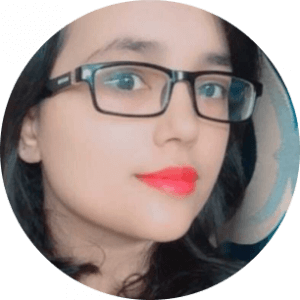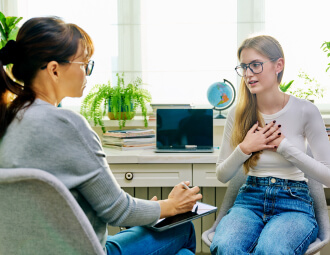The Covid-19 pandemic has forever changed the world in many ways, and telehealth is no exception. The topic of telemedicine moved to the forefront of many discussions related to Coronavirus. Still, its benefits have existed at some level for several years now, and it is seeing a surge in popularity and use during the Covid outbreak.
In this article, we look at the implications of telemedicine before and after Covid. We’ll also talk about the recent surge in telemedicine use and what it means for healthcare providers and the general public.
Looking for the best telehealth services? Click the button below to get telehealth services from one of the leading providers.
What Are Telehealth or Telemedicine Services?
Telehealth is a broad category of services provided by health care professionals via internet technology—online. It is intended to support and promote long-distance medical care, patient and professional health education, public health, and health administration.
Telemedicine is a subset of telehealth defined as diagnosing and treating patients using telecommunication technologies. It entails using electronic communications and software to provide clinical services to patients who cannot come in person. Telemedicine is commonly used for follow-up visits, chronic condition management, medication management, specialist consultation, and various other clinical services that can be delivered remotely via secure video and audio connections.
Telemedicine Before COVID
Before the onset of the pandemic in the United States, telehealth usage was a minimal portion (roughly 0%) of outpatient visits. It means that even though it has been around for a long time, its significant surge in popularity was gained recently. Before Covid, when people became ill, they preferred to visit an offline clinic rather than making a video call or logging on for an online consultation.
One of the primary reasons for such a lack of recognition of telehealth services was a shortage of coverage for virtual visits. According to a 2019 survey by the American Well Telehealth Index, 77% of physicians identified payment uncertainty as one of the major obstacles to expanding telehealth adoption.
Some providers were also hesitant to adopt telehealth, fearing it would be uncertain or impact their bottom line. While most patients who tried telehealth appreciated it, the technology was simply not widely spread enough to attract more consumers in 2019.
Telemedicine During COVID
Covid-19 boosted the use of telehealth services, ensuring the continuity of care for hundreds of thousands of humans. In addition, it has increased healthcare flexibility while supporting worldwide healthcare access. During the Covid-19 outbreak, telemedicine was a critical tool for keeping patients and healthcare professionals safe and providing improved healthcare services in the comfort of one’s home.
During full-fledged Covid times, the telehealth program mobilized the medical potential to reduce disease transmission, provide safe online health services, protect clinicians and the community from infection, and, at last, reduce the burden on healthcare providers and the health system.
According to a
We are dedicated to providing effective healthcare services to all our users. So join us now by clicking the button below!
Healthcare Providers Who Deliver Their Services Online
Telehealth services were provided to patients by a variety of healthcare providers. These are some examples:
- Specialists and consultant physicians
- General practitioners (GPs)
- Allied health providers
- Nurse practitioners
- Mental health professionals
Telemedicine After COVID
The popularity of telehealth services appears to grow with each year. The Covid crisis has not yet been resolved, but it is hoped that it will have little impact on the telemedicine industry’s progress when it does.
Now, when the post-pandemic era has begun with the removal of many barriers by state authorities, many users have already tried telehealth services and have mostly liked them. The resemblance is sufficient to ensure the continuation of telemedicine even after the pandemic.
A year before, approximately 65 percent of Americans were unsure about the reliability of telehealth, and 56 percent didn’t believe it was possible to receive the same level of care as physical or in-person appointments.
After COVID-19, nearly 88 percent want to continue utilizing telehealth for non-urgent consultations, and almost 80 percent believe it is possible to obtain quality healthcare using such technologies. Again, the pandemic led to calls for secure, remote medical care and advice. And, as the saying goes, necessity is the mother of invention—or, in this case, adoption. Millions of patients who were once walk-ins became logins overnight, and soon all that was required for a quality check-up was a stable WiFi connection.
Join MEDvidi to get efficient online health services from the comfort of your home. Click below!

Telemedicine Stats During and After COVID
The following information shares the changing telehealth trends during the pre and post-pandemic period.
Telehealth Trends 2021
According to the research conducted by Cosmos that referred to data of more than 126 million people, a 13% increase in telehealth visits by outpatients was observed in the first six months of Covid as compared to before the pandemic. This rate fell to 11% after six months and 8% a year later (March-August, 2021). However, with the addition of telehealth visits, the total number of outpatient visits between March and August 2021 was 19% higher than the number of visits prior to the pandemic in March and August 2019.
Telehealth Trends 2022
- Approximately 74% of patients in the United States reported that they would use telehealth services (
American Hospital Association [2*] ) - Approximately 74% of patients are comfortable communicating with their doctors via technology rather than seeing them in person (Cisco)
- Approximately 67% of patients said that using telemedicine increases their satisfaction with medical care somewhat or significantly (Software Advice)
Benefits of Telemedicine
The current era has added to the development of telemedicine, which has emerged as a new global trend. Although telehealth services are expanding to address many national health care issues, there are still drawbacks. Most healthcare providers agree that the pros of telehealth services outweigh the cons, but that doesn’t mean the disadvantages should be overlooked. The main goal behind promoting the telemedicine field is to provide patients with more accessible and convenient healthcare.
To get an online consultation with a licensed prescriber, contact MEDvidi. Our mental health experts offer treatment for various mental health issues such as general anxiety disorder, depression, stress, ADHD, and other mental health problems.
To Sum Up
Telemedicine before and after Covid has changed rapidly, removing health barriers all around the globe. Telemedicine can aid in the treatment of a variety of medical conditions. It is most effective when a person seeks medical attention from a qualified physician and provides detailed information about their symptoms.
If you are skeptical about choosing the right platform for getting mental health help via telehealth services, then MEDvidi is the answer to all your questions. Join us to get the treatment that will work for you!













